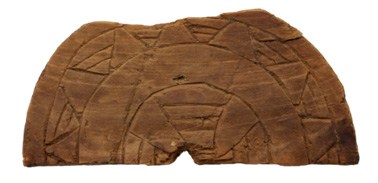A rose by any other name…
Coopered vessel is a common denominator for these kinds of containers, and in Norwegian, they have different names based on their usage (melkeringe – for containing milk) and also depending on dialects (dall, dylle, dyll).
What were they used for?
These types of wooden containers have been used to store different types of food and drink. There is, of course, also the possibility of storing other things in them, like sewing equipment, yarn, etc. Still, it’s highly likely that the primary use was for storing food as this is how they’ve been used well into modern times. Low and wide containers were usually for storing milk while the fat separated. This could then easily be skimmed from the top. There were also containers for storing porridge or butter, and these would be higher than the milk containers. There were also containers for storing salted fish, and others for storing beer. We can see that these coopered vessels were versatile storage units when it came to food and drink. We know that it was considered a nice and courteous gesture to send butter as gifts after childbirth a century or two ago and likely further back. This butter needed a container, and they could be beautifully decorated. Butter was time-consuming to make and thus expensive, so this was a fine gift to give as well as receive.

Lid for coppered vessel, found in Oslogate 6, Oslo. Photo: Mårten Teigen
We have many findings of parts for coopered vessels from the medieval town of Oslo. From the excavation site Oslogate 6, we have over 270 such finds, They represent all the parts mentioned here, though most are staves and bottom plates. It can also be challenging to separate lids from bottom plates sometimes due to the circular shape. The staves are more easily identifiable because of the characteristic ‘notch’ on the bottom end which is used to ‘grip’ the bottom plate. The same can be said for the elongated staves which often have a circular shape on top to fasten a handle.
What these medieval vessels were used for exactly is difficult to say today. None of them have any traces of food on them that can be examined (like we see on shards from soapstone pots and pottery). We know they’re not big enough to have been used for storing grain. The size falls more in line with the later known use for storing many kinds of foods like butter, fish, and porridge.
Fun fact
In Norway, there’s a difference between making coopered vessels such as buckets, tubs, and vats (lagging), and barrel making (bøkring). This has a lot to do with the difference between the shapes of the staves, in addition to barrels having two ends/bottoms.
Read more
- Erik Schia. Tregjenstander. De arkeologiske utgravninger i Gamlebyen, Bind 7. Dagliglivets gjenstander. 1990
- Store Norske Leksikon – snl.no
- Universitetsmuseenes gjenstandsbaser 2019. Elektronisk dokument. Hentet fra Unimusportalen





